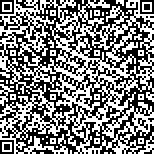| 摘要: |
| 水下视频可直观记录和反映海洋牧场生物资源的现状和变动,目前亟待开展基于图像的海洋牧场生物识别分类方法研究,以充分发挥图像处理技术在海洋牧场生物群落监测领域的应用潜力。利用采集自我国北方烟威地区包含鱼礁、藻床和泥沙三种图像背景的水下视频,开展了图像增强、图像分类数据集的建立和3种分类模型的应用。对比了基于绿通道的色彩补偿和限制对比度的自适应直方图均衡等方法在海洋牧场水下图像增强上的效果。建立了北方海洋牧场常见岩礁生物图像分类数据集,包括花鲈(Lateolabrax japonicus)、鮻(Liza haematocheilus)、许氏平鲉(Sebastes schlegelii)等鱼类11种、棘皮类3种和蟹类1种,共23 211张图像。基于飞桨深度学习框架和PaddleX全流程开发工具,选择AlexNet、MobileNet V3和ResNet50三种图像分类卷积神经网络进行迁移学习,并分别验证了其在含噪音水下图像上的鲁棒性。结果表明,三种模型在测试集的类准确率分别达到96.64%、94.75%和99.23%,其中ResNet50模型在含有高斯噪音的图像集验证具有更好的鲁棒性。综之,基于深度学习的计算机视觉技术在我国海洋牧场生物群落监测中具有较大应用潜力,可为我国海洋牧场监测和管理提供新的思路和方法。 |
| 关键词: 海洋牧场 岩礁性生物 图像增强 卷积神经网络 迁移学习 |
| DOI:10.11693/hyhz20210100005 |
| 分类号:P714+.5 |
| 基金项目:国家重点研发计划,2019YFD0900802号;中国科学院科技服务网络计划,KFJ-STS-ZDTP-077号;中国科学院“十三五”信息化建设专项,XXH13506号;国家自然科学基金青年科学基金项目,41806150号。 |
附件 |
|
| CLASSIFICATION OF REEF BIOLOGICAL IMAGES OF MARINE RANCH BASED ON DEEP CONVOLUTION NEURAL NETWORK |
|
UN Dong-Yang1,2, LIU Hui1, ZHANG Ji-Hong2, SUN Li-Yuan3, WANG Qing1, ZHAO Jian-Min1
|
|
1.Yantai Institute of Coastal Zone Research, Chinese Academy of Sciences, Yantai 264003, China;2.Yantai University, Yantai 264005, China;3.Shandong Hydrobios Resources Conservation and Management Center, Yantai 264000, China
|
| Abstract: |
| Status and change of biological resources in marine ranch can be recorded with underwater video. It is necessary to develop image-based biological classification methods to fully develop machine vision technology. We collected underwater videos with different backgrounds of reef, algal bed, and sediment in Yantai and Weihai areas, Shandong, China, and conduct image enhancement, construction of dataset, and application of three classification model. Effects of various color compensation methods were compared in the enhancement of underwater image in marine ranch area, including color compensation based on green channel, contrast limited adaptive histgram equalization, and so on. An image dataset for reef biological classification was established with manual annotation. In total, 23211 images were used, from which 11 species of common fish in reef area (including Lateolabrax japonicus, Liza haematocheilus, Sebastes schlegelii etc.), 3 species of echinoderm, and 1 species of crab, were recognized and the images processed. Using the PaddlePaddle2.0 and PaddleX development kits, convolutional neural networks AlexNet, MobileNet V3, and ResNet50 were applied to transfer the learning image classification and verify the robustness of the algorithm on underwater images with noise, from which the accuracy of recognition reached 96.64%, 94.75%, and 99.23%, respectively. In addition, the ResNet50 model performed better in robustness with Gaussian noise. Therefore, computer vision technology based on deep learning presented a great application potential in biological resources monitoring in marine ranch, and provide new ideas and methods for the monitoring and management of marine ranch in China. |
| Key words: marine ranch reef organisms image enhancement convolutional neural network transfer learning |
